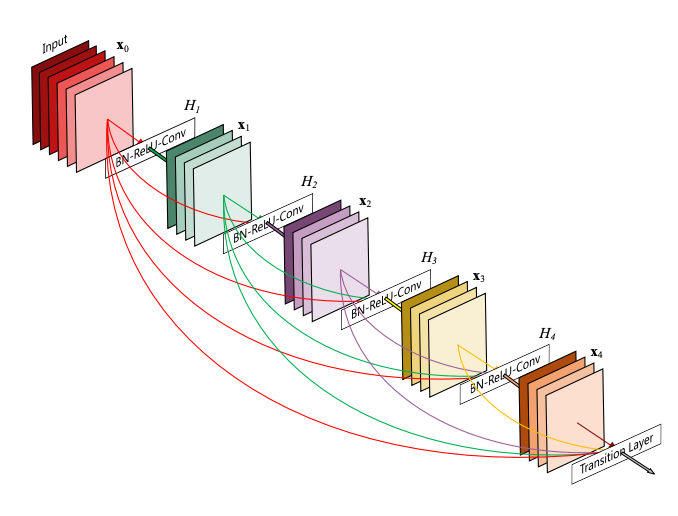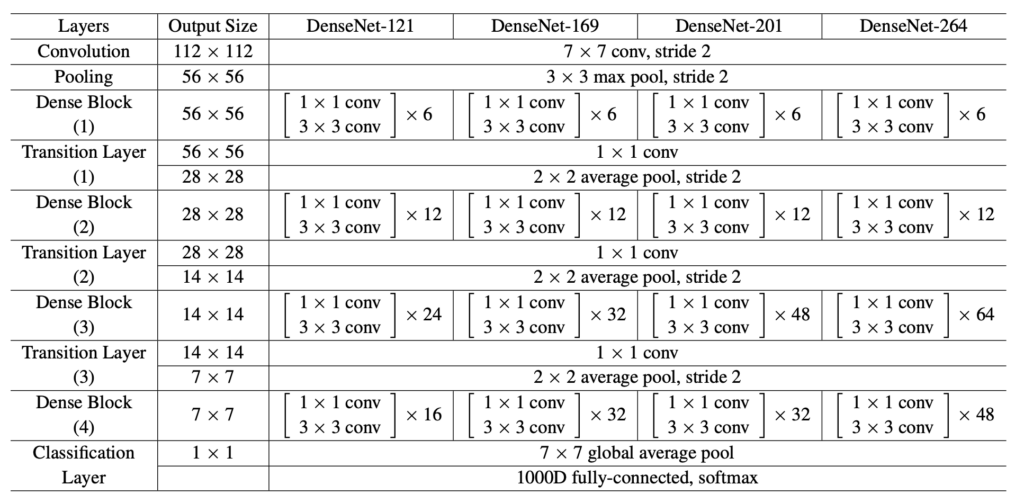DenseNet


import torch
model = torch.hub.load('pytorch/vision:v0.10.0', 'densenet121', pretrained=True)
# or any of these variants
# model = torch.hub.load('pytorch/vision:v0.10.0', 'densenet169', pretrained=True)
# model = torch.hub.load('pytorch/vision:v0.10.0', 'densenet201', pretrained=True)
# model = torch.hub.load('pytorch/vision:v0.10.0', 'densenet161', pretrained=True)
model.eval()
所有预训练模型都要求输入图像以相同的方式进行归一化,即由形状为 (3 x H x W) 的 3 通道 RGB 图像组成的小批量数据,其中 H 和 W 预计至少为 224。图像必须加载到 [0, 1] 范围内,然后使用 mean = [0.485, 0.456, 0.406] 和 std = [0.229, 0.224, 0.225] 进行归一化。
这是一个示例执行。
# Download an example image from the pytorch website
import urllib
url, filename = ("https://github.com/pytorch/hub/raw/master/images/dog.jpg", "dog.jpg")
try: urllib.URLopener().retrieve(url, filename)
except: urllib.request.urlretrieve(url, filename)
# sample execution (requires torchvision)
from PIL import Image
from torchvision import transforms
input_image = Image.open(filename)
preprocess = transforms.Compose([
transforms.Resize(256),
transforms.CenterCrop(224),
transforms.ToTensor(),
transforms.Normalize(mean=[0.485, 0.456, 0.406], std=[0.229, 0.224, 0.225]),
])
input_tensor = preprocess(input_image)
input_batch = input_tensor.unsqueeze(0) # create a mini-batch as expected by the model
# move the input and model to GPU for speed if available
if torch.cuda.is_available():
input_batch = input_batch.to('cuda')
model.to('cuda')
with torch.no_grad():
output = model(input_batch)
# Tensor of shape 1000, with confidence scores over ImageNet's 1000 classes
print(output[0])
# The output has unnormalized scores. To get probabilities, you can run a softmax on it.
probabilities = torch.nn.functional.softmax(output[0], dim=0)
print(probabilities)
# Download ImageNet labels
!wget https://raw.githubusercontent.com/pytorch/hub/master/imagenet_classes.txt
# Read the categories
with open("imagenet_classes.txt", "r") as f:
categories = [s.strip() for s in f.readlines()]
# Show top categories per image
top5_prob, top5_catid = torch.topk(probabilities, 5)
for i in range(top5_prob.size(0)):
print(categories[top5_catid[i]], top5_prob[i].item())
模型描述
密集卷积网络 (DenseNet) 以一种前馈方式将每个层连接到所有其他层。传统的具有 L 层的卷积网络有 L 个连接——每个层与其后续层之间一个连接——而我们的网络有 L(L+1)/2 个直接连接。对于每个层,所有前一个层的特征图都被用作输入,其自身的特征图被用作所有后续层的输入。DenseNet 具有几个引人注目的优点:它们缓解了梯度消失问题,加强了特征传播,鼓励了特征重用,并大大减少了参数数量。
下面列出了使用预训练模型在 ImageNet 数据集上的 1-裁剪错误率。
| 模型结构 | Top-1 错误率 | Top-5 错误率 |
|---|---|---|
| densenet121 | 25.35 | 7.83 |
| densenet169 | 24.00 | 7.00 |
| densenet201 | 22.80 | 6.43 |
| densenet161 | 22.35 | 6.20 |
参考文献
